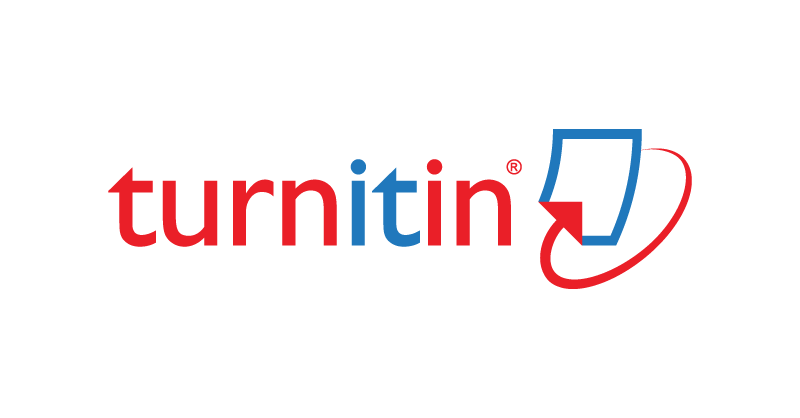Analisis Strategi Bersaing Merek Mie Instan Menggunakan Teknik Markov Chain Dan Game Theory (Studi Kasus Mie I Vs Mie S)
DOI:
https://doi.org/10.32734/jsti.v23i2.6115Keywords:
Operational Research, Markov Chain, Game TheoryAbstract
The Markov chain hypothesis is the hypothesis discussed in stochastic interactions, and has several applications. This strategy is always coordinated with future situations whose whereabouts cannot be known with certainty, so the community tries to carry out exercises with future directions full of vulnerabilities. Hypotheses are numerical ways of dealing with competitive planning situations and the struggles between different interests. This hypothesis is designed to examine the dynamic cycle of various serious states and includes at least two interests. In this situation, the information obtained from the voting results is then assessed for its legitimacy and quality by using the SPSS program. The consequence of counting with Markov chain's S Noodle items reduces the share of the entire industry by 5.8%, while the fun noodle items expands a portion of the entire industry by 41%, the side effect of the game hypothesis being specific. namely X1 with probability 0.5, X2 with probability 0.5 and X3 with probability 3.16. Meanwhile, to limit misfortune, Indomie consolidates three systems, namely Y1 with likelihood - 0.1, Y2 with likelihood 0.5 and Y3 with likelihood 1.
Downloads
References
M. A. Anthara, “Analisis Perilaku Konsumen Mie Instan Dengan Menggunakan Analisis Markov,†Ina. J. Ind. Qual. Eng., vol. 7, no. 1, pp. 37–43, 2019, doi: 10.34010/iqe.v7i1.1728.
F. N. Masuku, Y. A. R. Langi, C. Mongi, and R. Markov, “Analisis Rantai Markov Untuk Memprediksi Perpindahan Konsumen Maskapai Penerbangan Rute Manado-Jakarta Analysis of Markov Chain To Predict Consumer Movement of Airline Route Manado-Jakarta,†J. Artic., vol. 9, no. 1, pp. 1–5, 2020.
S. Vantika and U. S. Pasaribu, “Markov chain for estimating human mitochondrial DNA mutation pattern,†AIP Conf. Proc., vol. 1692, no. 2012, pp. 336–342, 2015, doi: 10.1063/1.4936438.
A. Shamshad, M. A. Bawadi, W. M. A. Wan Hussin, T. A. Majid, and S. A. M. Sanusi, “First and second order Markov chain models for synthetic generation of wind speed time series,†Energy, vol. 30, no. 5, pp. 693–708, 2005, doi: 10.1016/j.energy.2004.05.026.
D. Setyawam and S. R. Wicaksono, “Penerapan Metode Modified Distribution Dalam Sistem Pendistribusian Barang Pada PT. Miswak Utama,†Pros. Semin. Nas. Sist. Teknol. Infromasi, pp. 71–76, 2007.
B. Wang, Y. Wu, and K. J. R. Liu, “Game theory for cognitive radio networks: An overview,†Comput. Networks, vol. 54, no. 14, pp. 2537–2561, 2010, doi: 10.1016/j.comnet.2010.04.004.
B. A. B. Iii, “11520066_Bab_3,†J. Artic., vol. 42, no. 5, pp. 38–50, 2013, [Online]. Available: https://www.scribd.com/document/373947618/11520066-Bab-3.
K. Fidesia and P. L. Sihombing, “Produk Mie Instan Dengan Menggunakan Rantai,†J. Int., vol. 23, no. 1, pp. 1–15, 2021.
R. S. Jusuf, “Analisis Pengaruh Tqm, Sistem Pengukuran Kinerja Dan Reward Terhadap Kinerja Manajerial,†J. Ris. Ekon. Manajemen, Bisnis dan Akunt., vol. 1, no. 3, pp. 634–644, 2013, doi: 10.35794/emba.v1i3.1870.
K. Abidin and M. Roni, “Pengaruh Brand Image Dan Kualitas Produk Terhadap Keputusan Pembelian Motor Matic Honda Beat ( Studi Kasus Pada Konsumen Pengguna Motor Matic Honda Beat Mahasiswa Universitas Bina Darma Palembang ).,†vol. 1, no. 3, pp. 367–374, 2017.
M. McCLOSKEY, “Discussion Paper,†Ann. N. Y. Acad. Sci., vol. 534, no. 1, pp. 917–919, 1988, doi: 10.1111/j.1749-6632.1988.tb30180.x.
S. Behnezhad, S. Dehghani, M. Derakhshan, M. T. HajiAghayi, and S. Seddighin, “Faster and simpler algorithm for optimal strategies of blotto game,†31st AAAI Conf. Artif. Intell. AAAI 2017, no. 1921, pp. 369–375, 2017.
E. W. Piotrowski and J. Sładkowski, “An Invitation to Quantum Game Theory,†Int. J. Theor. Phys., vol. 42, no. 5, pp. 1089–1099, 2003, doi: 10.1023/A:1025443111388.
A. Saputra and S. Sofiyanurriyanti, “Analisis Kepuasan Pelanggan terhadap Kualitas Pelayanan Jasa Ekspedisi dengan Metode Servqual dan Data Envelopment Analysis (DEA) di Kota Meulaboh,†J. Sist. Tek. Ind., vol. 23, no. 1, pp. 82–96, 2021, doi: 10.32734/jsti.v23i1.4773.
J. R. Situmorang, “Penggunaan Game Theory Dalam Ilmu Sosial,†J. Adm. Bisnis Unpar, vol. 11, no. 2, pp. 160–172, 2015, doi: 10.26593/jab.v11i2.1715.
O. Ekberg, S. Hamdy, V. Woisard, A. W. Hannig, and P. Ortega, “Social and Psychological Burden of Dysphagia : Its Impact on Diagnosis and Treatment Social and Psychological Burden of Dysphagia : Its Impact on Diagnosis and Treatment,†vol. 4, no. May 2015, pp. 139–146, 2002, doi: 10.1007/s00455-001-0113-5.
Downloads
Published
How to Cite
Issue
Section
License
Copyright (c) 2021 Jurnal Sistem Teknik Industri

This work is licensed under a Creative Commons Attribution-ShareAlike 4.0 International License.
The Authors submitting a manuscript do so on the understanding that if accepted for publication, the copyright of the article shall be assigned to TALENTA Publisher Universitas Sumatera Utara as the publisher of the journal.
Copyright encompasses the rights to reproduce and deliver the article in all forms and media. The reproduction of any part of this journal, its storage in databases, and its transmission by any form or medium will be allowed.



















